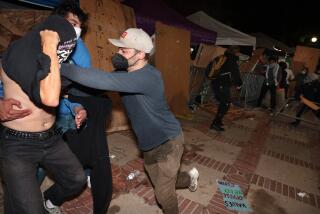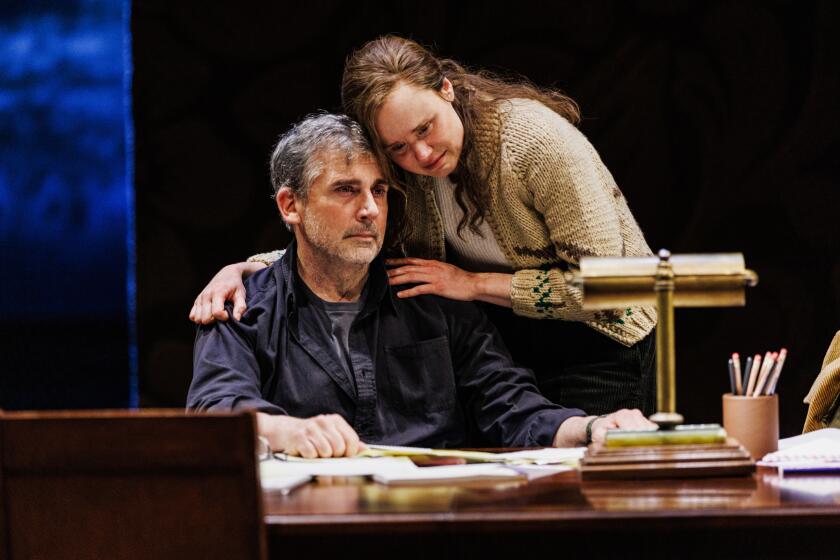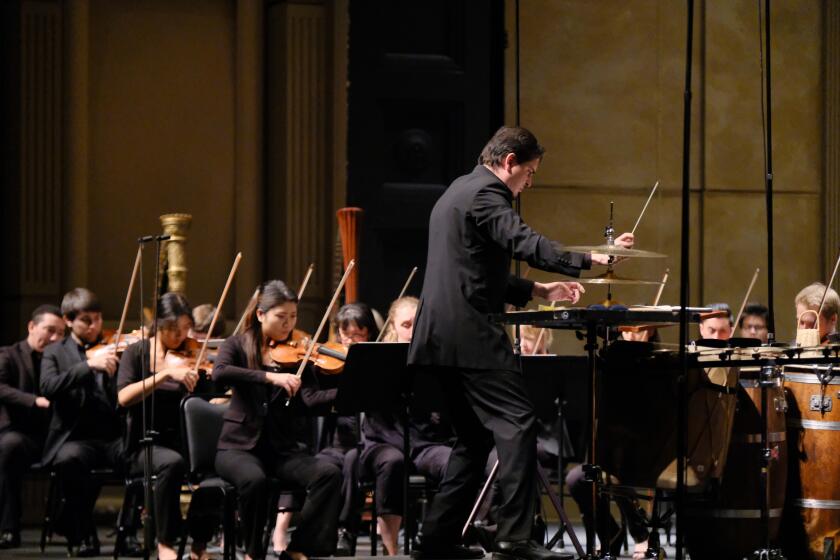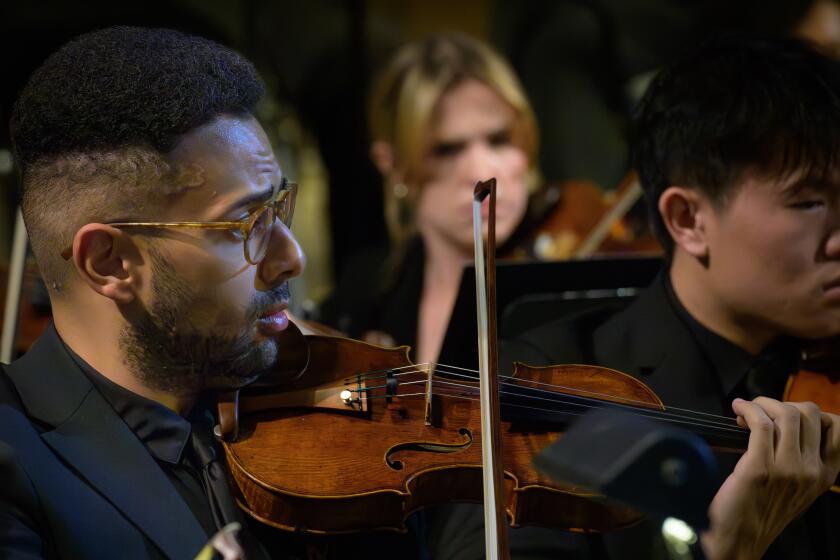‘La Dolorosa’ Is Home Again : Art: Mission plans to celebrate the recovery of a centuries-old painting that was stolen in 1977.
Fourteen years after its theft from San Gabriel Mission, a centuries-old oil painting of the Virgin Mary will get a jubilant welcome home today.
The painting, called “La Dolorosa” (Our Lady of Sorrows) was stolen from the mission in downtown San Gabriel in June, 1977. It was discovered in 1990 in a house only a few blocks from the mission.
The house belonged to the parents of William March Witherell, 40, the suspect in a nationwide spree of art and antiquities thefts. The painting was taken to Philadelphia and used as evidence in Witherell’s trial. It was brought back Thursday by a parishioner who flew to Philadelphia to retrieve it from the FBI.
The return of the painting nearly coincides with the mission’s 220th anniversary celebration next weekend. Today there will be a special Mass at 5:30 p.m., followed by a processional with “La Dolorosa” and a wine-and-cheese reception at 6:30 in honor of both the painting’s return and the queen of the anniversary fiesta.
Witherell reportedly stole books around the country, traveling in a camper truck. Besides the painting, 33 antique books stolen from San Gabriel Mission were returned last week. They were among the cache found in the house by FBI agents investigating the theft of two rare Benjamin Franklin books in Philadelphia. Other articles in the cache were traced to facilities including the Los Angeles Public Library and San Fernando Mission.
Witherell was convicted on federal charges of interstate transportation of stolen property and was sentenced last November to a year and a day in federal prison.
Anticipating today’s ceremony, parish historian Lillian Hermes said, “It’s going to be a beautiful, beautiful sight to see that painting again. People always have been attached to the painting for its simplicity and beauty.”
For more than two centuries, the painting of the blue-veiled, grieving mother of Jesus, with her hands clasped, watched over the baptisms, communions, confirmations, weddings and burials of the parishioners of San Gabriel Mission. Though the precise origin of the unsigned painting is not known, it is believed to have been painted in Spain or Mexico in the 16th Century and brought here by the priests who founded the mission.
“The mission and the painting have become almost one and the same,” said Connie Meza, administrator of the 2,000-member parish. “People who have been in the parish for one, two and even three generations, they look on this mission and the painting as a part of their identity.”
Furthermore, the painting has long remained a symbol of tolerance and successful relations between missionaries and indigenous people, Meza said.
According to parish accounts, two Franciscan priests journeyed by mule train from San Diego to the San Gabriel Valley, where they were surrounded by Indians.
Frightened, the priests unfurled the canvas. “As soon as (the Indians) set their eyes on the image of the Blessed Virgin, they threw down their bows and arrows,” says one account. The awe-struck Indians took beads from around their necks and gave them to the missionaries, who established San Gabriel Mission on Sept. 8, 1771.
The history associated with the painting, mission art experts say, makes it priceless.
“It was unbelievable that someone would come in and help themselves to that painting,” Hermes said.
Witherell has been diagnosed as a schizophrenic, according to news accounts of his trial last year. He has not been charged in California for the thefts, partly because the missions and libraries here did not pursue charges.
What’s most important now, church members say, is that “La Dolorosa” is coming back to resume its place as an inspiration to the devotional life of the parish.
In 1936, the year Hermes joined the church, she said, a parishioner made a wrought-iron frame shaped like a grapevine--symbolic of the mission vineyard--to hold the painting.
For years the framed painting stood to the right of the altar in the church, a structure dating from 1804 and closed for repairs since the 1987 Whittier earthquake.
During World War II, Hermes said, “La Dolorosa” became the focus for novenas and countless prayers for world peace. “So many of us were young and our husbands had gone off to war,” she said. “Hundreds of us would gather every Friday to say the novenas. This is one thing that some of us will never forget about that painting.”
More to Read
Start your day right
Sign up for Essential California for news, features and recommendations from the L.A. Times and beyond in your inbox six days a week.
You may occasionally receive promotional content from the Los Angeles Times.






